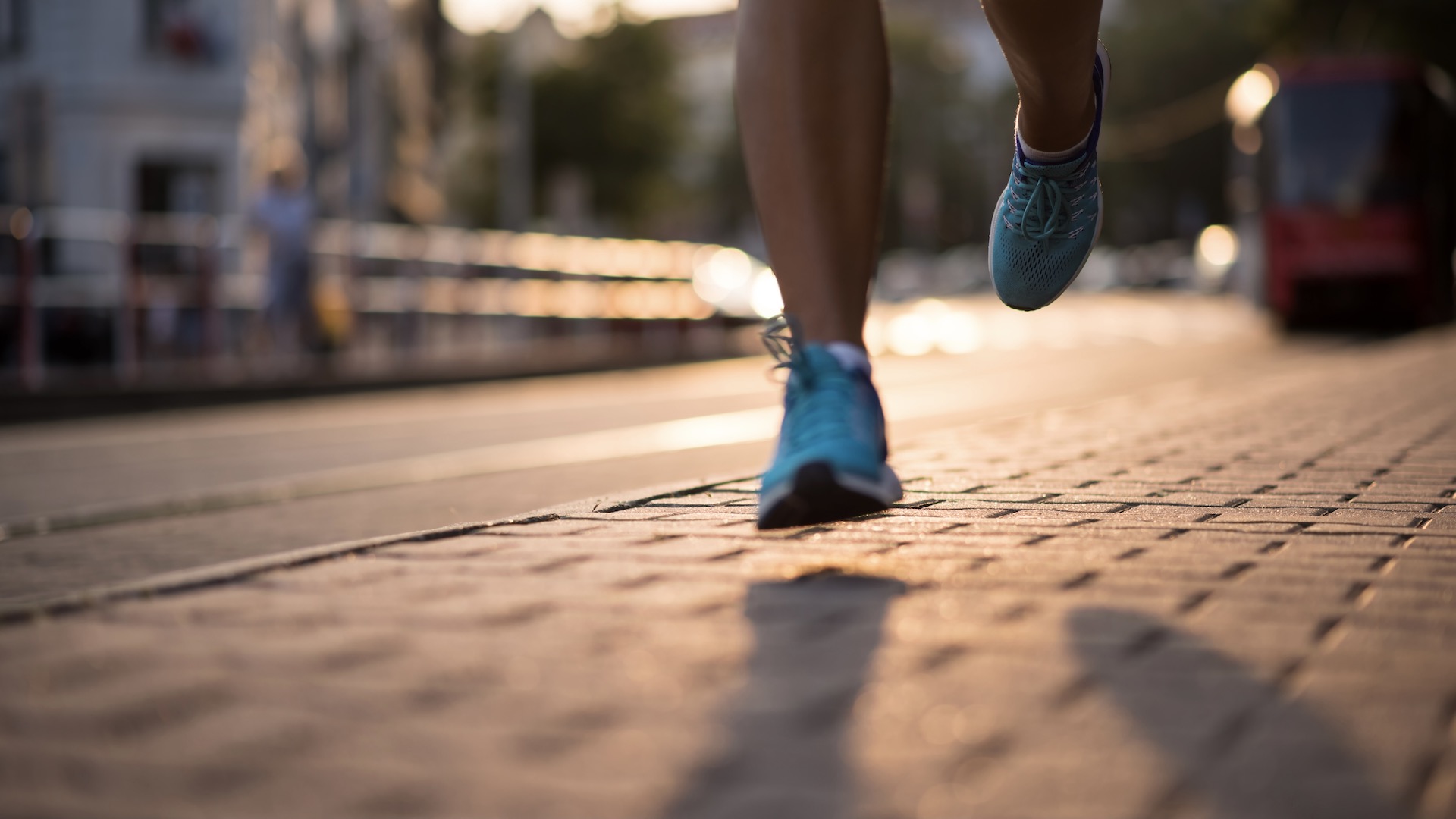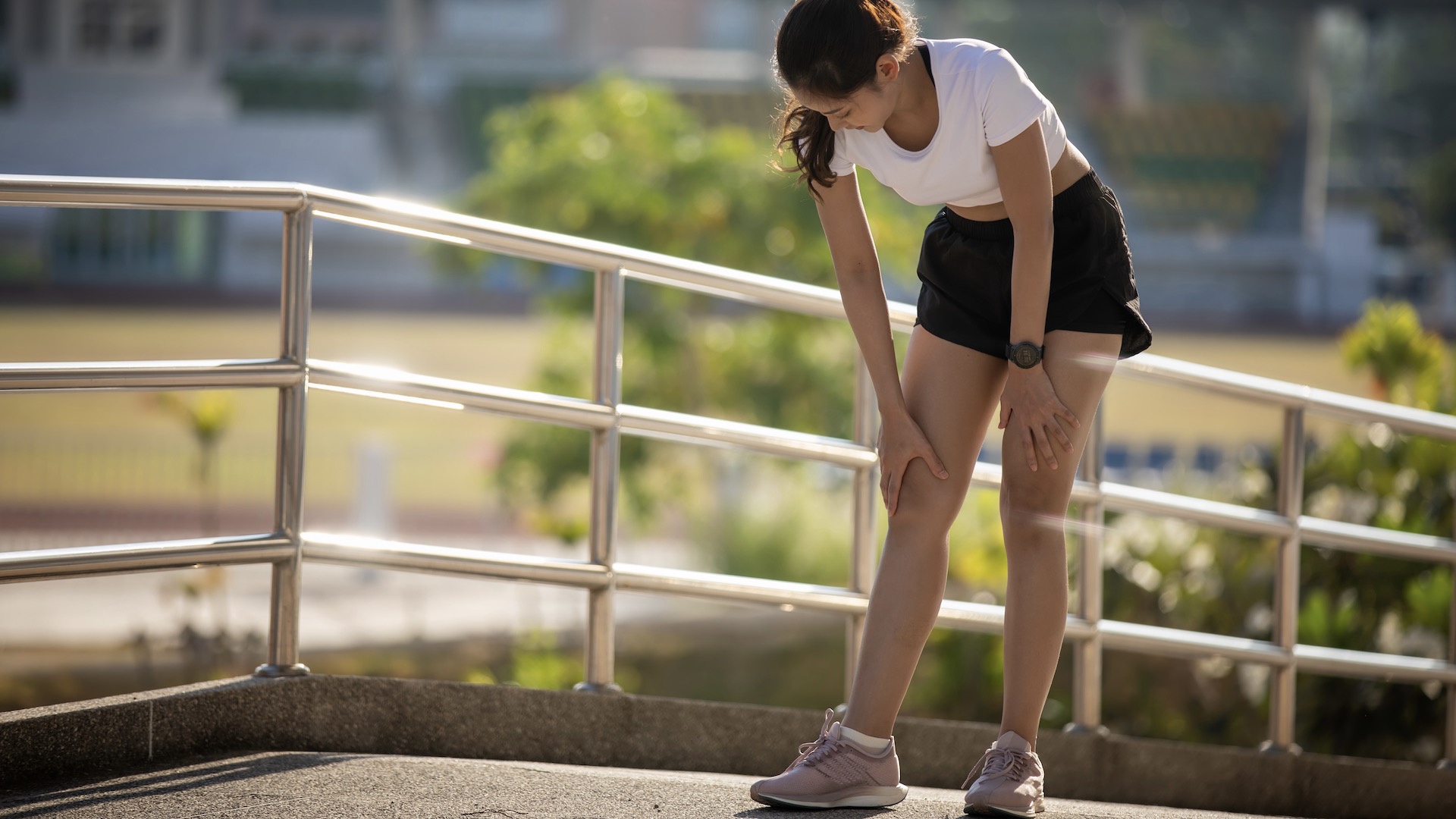Running with plantar fasciitis: what you need to know about the foot condition and how to treat it
What is plantar fasciitis, why it affects runners and how to recover from the foot injury

Most runners will have heard of plantar fasciitis, or experienced it. Its is a relatively common injury that strikes runners of all abilities and, usually, when they are least expecting it. It is especially a problem for runners who are building up the mileage to a race goal, or for runners who have started running on a different terrain. But do you know why plantar fasciitis occurs and what can be done if you end up suffering with this issue?
What is plantar fasciitis?
The plantar fascia is a fibrous band in the foot that plays an important role as one of the support structures of the foot arch, or instep. It behaves much like a ligament.
But as Mr Rohit Madhav, a consultant orthopaedic and trauma surgeon at The Princess Grace Hospital in London, explains, the fascia can be prone to injury. He says: “Plantar fasciitis usually occurs because of excessive strain and load on the foot and muscles of the foot . These leads to repetitive micro traumas or stress on the plantar fascia. The fascia then undergoes degenerative change.
“Plantar fasciitis most commonly presents itself in runners as a medial heel pain.”

Why do runners get plantar fasciitis?
There are a number of reasons for being injured with plantar fasciitis. It is said to be a common issue for runners and also kick boxers.
For runners, it could be something as simple as a change of footwear to a running shoe that does not fully support the foot. Another cause can be a running shoe that is so worn that it is no longer able to adequately support the foot.
Barefoot activities or walking in flat, thin-soled shoes and sandals can cause plantar fasciitis as well.
All the latest inspiration, tips and guides to help you plan your next Advnture!
Runing on harder or flatter terrain than you are used to can cause a tightening in the fascia and muscles of the foot. Likewise, the same can occur if moving form tarmac running to trail running, or picking up the distance of your runs, such as when ultra running,
Madhav explains: “The use of tight, ill-fitting or worn out shoes can precipitate the deterioration in the health of the fascia. Generally, however, it’s not so much the footwear but the imbalance in the muscles of the leg, foot and ankle that overload the arch structures resulting in injury.
“Any sudden change in type of footwear can create stress injuries and so it is important to vary or rotate the styles of shoes regularly.
“The most common example of this is walking in flip-flops during summer, which you don’t regularly use, then returning to your normal routine after which the heel then starts to hurt.
“Another common type of presentation is going from predominantly heels to flats, which causes the imbalance in your muscles and this then leads to a straining of the arch, starting with the fascia. Next comes the pain of plantar fasciitis.”
Madhav also reports that sudden changes in intensity of activities, such as running, or walking or running on new types of terrain can lead to a strain on the fascia.

What does plantar fasciitis feel like?
Runners will usually find the lower part of their foot feeling tight, from forefoot to heel. As it worsens, the heel becomes increasingly painful.
The pain and sense of tightness is usually worse in the morning when you first get up after a night’s sleep. The foot can stiffen overnight and it can be difficult to get the foot moving in the morning.
Sometimes, when you go for a run the pain can ease but this doesn't mean the injury has been cured. It is likely that the process of running stretches the foot and the plantar fascia but the underlying problem is still there.
How to recover from plantar fasciitis
The chances are that runners will suspect they have plantar fasciitis but it is a good idea to have a proper diagnosis made, such as by a sports physiotherapist or podiatrist.
Katie Knapton, owner of phyisoFast, advises: "The best treatment for plantar fasciitis is to wear supportive footwear, such as insoles, and to try, when possible, to reduce pressure on the structures if the pain is very acute.
“For those suffering, it’s important to try to maintain fitness levels rather than stopping exercise and so it could be they introduce low-impact exercises, such as swimming and cycling."
Madhav adds: “The aim of intervention – and to help the fascia recover – is to reduce the forces of the muscle imbalance. Therefore, we try to use structured supportive footwear, not too soft, with a thicker, cushioned heel and support under the instep/arch area.”
There are also many other suggested treatments for relieving the pain of plantar fasciitis and for aiding recovery.
They include:
Foot massage
A few studies have shown the effectiveness of self-massage for reducing the pain of plantar fasciitis. You can try rolling the base of the foot over a tennis ball or a golf ball. You can do this while sat at your desk or watching the TV.
If you feel tight or “hot spots” of pain, try adding more pressure to that area of the foot while rolling it.
Pressure from this kind of massage helps to distract the pain receptors of the brain and it also sends improved blood flow to the arch and heel. Massage is also thought to be helpful in breaking down painful adhesions (improperly healed tears) on the plantar fascia ligament.
Other products for effective massage include a water bottle filled with frozen water (stick the water-filled bottle in the freezer overnight), or specialist foot massage products.
Stretch it out
A study (published in Foot & Ankle International) reported that almost 85% of people with plantar fasciitis found that stretching was helpful for relieving the pain of the injury.
Stretching helps to improve the flexibility, strength and stretch of the plantar fascia. There are plenty of ways to stretch the foot, such as sitting on the floor with your legs stretched out in front of you. Place a band around the foot and gently pull it towards you.
Toe separators
It’s claimed that toe separators can help to lengthen the tight and shortened fascia in the foot. These can be worn when you are sitting or lying down at rest – while watching TV, for example.
There is mixed medical opinion as to the merits of toe separators as a treatment for plantar fasciitis.
Sock splints
If you find that the plantar fasciitis is worse in the morning it could be that sock splints will be helpful overnight.
These help to keep the fascia stretched while you sleep, rather than the foot naturally settling to a position where the facia is stiff and inflexible. Again, there is mixed opinion on whether sock splints are a useful remedy for plantar fasciitis, although anecdotally many runners swear by these products.
Orthotic inserts
If you do end up at a sports physio or seeing a podiatrist, it is likely they will suggest that you use orthotics in footwear to ease the pain and issues of plantar fasciitis.
The aim of an orthotic insert is to cushion feet and reduce pain while you walk and run. Heel seats are inserts made specifically for plantar fasciitis and raise the foot’s arch to the ideal position to relieve pain from heel spurs.
Many runners wear orthotics in their footwear on every run.
TENs Therapy
TENS Therapy – TransCutaneous Electrical Nerve Stimulation – is sometimes used for for plantar fasciitis. This treatment is said to stimulate nerves in the feet with doses of electrical current, with the aim of improving blood flow and interrupting the body’s pain signals.
You can buy small TENS Therapy machines for use at home, or seek expert medical advice on this type of therapy.
There is some evidence (a Journal of Physical Therapy Science study, 2017) to show that TENS therapy helps to reduce inflammation and reduces stiffness and pain to the plantar fascia.
New running shoes
Sometimes it can be useful to buy a new pair of running shoes. Tell the shop that you have issues with plantar fasciitis and ask the to access your foot and running gait.
Slow build up
Another tip for preventing or easing the potential for plantar fasciitis is to make sure you build up your running mileage carefully, especially if you want to enjoy barefoot running. Any sudden changes in training or shoes can lead to foot muscle issues.

Fiona Russell is a widely published adventure journalist and blogger, better known as Fiona Outdoors. She is based in Scotland and is an all-round outdoors enthusiast with favorite activities including trail running, mountain walking, mountain biking, road cycling, triathlon and skiing (both downhill and backcountry). Aside from her own adventures, Fiona's biggest aim is to inspire others to enjoy getting outside and exploring, especially through her writing. She is also rarely seen without a running skort! Find out more at Fiona Outdoors.
